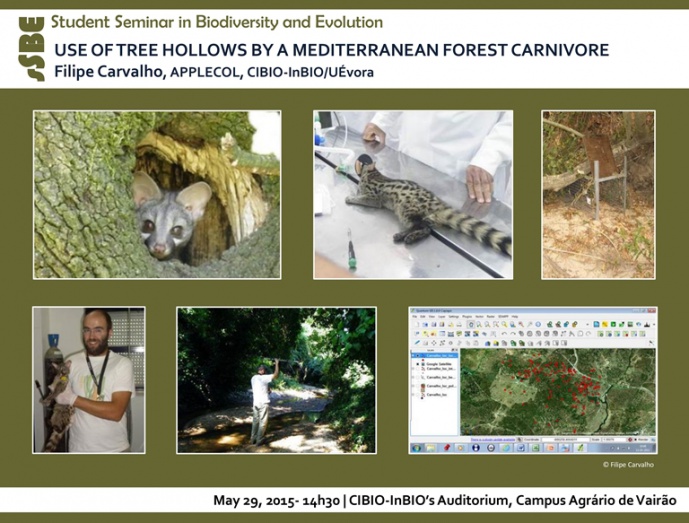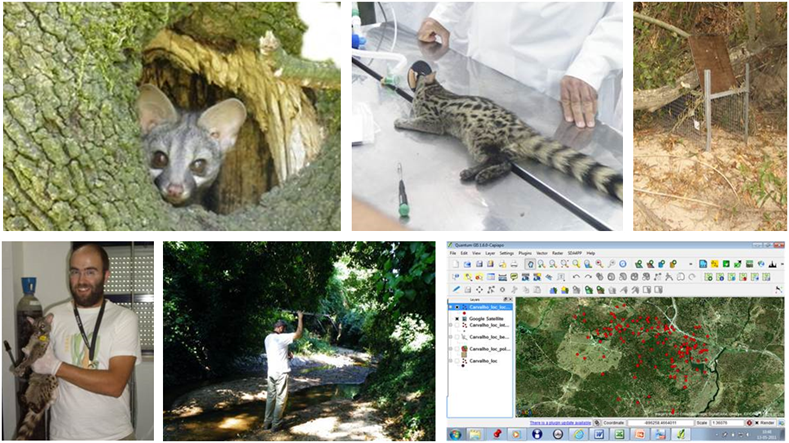USE OF TREE HOLLOWS BY A MEDITERRANEAN FOREST CARNIVORE

STUDENT SEMINAR IN BIODIVERSITY AND EVOLUTION

Although tree hollows seem to be key structures for a wide range of forest mammals, their importance for Mediterranean forest carnivores remain poorly understood. Here we address this issue, by analysing daily resting site use by 21 radio-collared common genets. Tree hollows were used far more frequently during the wet season (October–April; 73.1% of daily locations) than in the dry season (May–September; 47.6%). Nests and underground dens were the second and third most frequently used resting sites, respectively, in both wet (17.5% and 9.4%) and dry (34.1% and 18.3%) seasons. Each individual reused a large percentage of its resting sites (65.7%). Some resting sites (17.3%) were used by more than one individual, but simultaneous sharing was exceedingly rare (0.56% of daily locations). Hollow use probability during the wet season varied little in relation to environmental variables, though there was a tendency to be higher away from riparian habitats (>50 m) and to be lower in sites with very high shrub cover(>80%). Environmental influences were responsible for more variability in the dry season, when hollow usage was highest in hot days, in days with precipitation, far from riparian habitats, close to sources of human disturbance, in landscapes dominated by continuous forest habitats, and in sites with low shrub cover. Results support the importance of tree hollows for Mediterranean forest carnivores, probably because they provide safe shelter against unfavourable weather, predators and human disturbance. How-ever, results also revealed the importance of riparian trees, which offer support for building nests close to sources of water and food during the dry season. Considering home range size and the average number of hollow-bearing trees used by each genet, we recommend that management of cork and holm oak forests should strive to safeguard at least 4.6 hollow-bearing trees per 100 ha, while simultaneously maintaining large riparian trees. This will improve the resting habitat for common genets, while presumably favouring also other Mediterranean carnivores.
Graduated in biology by the University of Évora in 2004, Filipe Carvalho holds an MSc in Conservation Biology by the University of Évora (2009). Currently, Filipe Carvalho is waiting for the defence of his PhD at CIBIO-InBIO/University of Évora, within the APPLECOL Group. He is interested in carnivore’s ecology and behaviour and particularly he is focus in gathering all this kind of information in order to be able to assess the barrier effect of roads on animal movements, in particular forest carnivores, and how these structures influence landscape functional connectivity and population persistence.
Image credits: Filipe Carvalho